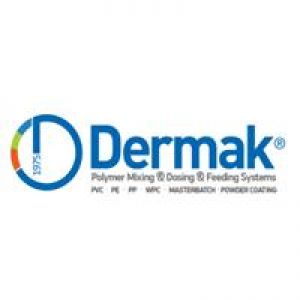Facts about PVC Pipes
Posted by DermakMixer on February 2nd, 2021
There are different types of Polyvinyl chloride or PVC channel sizes. PVC channels are constantly being used from constructing a simple home to creating a super structure. In this way, the pipe sizes often change depending on their capability or intent. Simple things about PVC channels and a portion of the standard sizes would be seen in the corresponding proclamations.
Content and Structure
The construction of the pipe consists of PVC pipes which are mounted with valves or controls and various elements. In either case, the pipe itself is made up of various substances or materials. The structure is exceptionally dependent on the use or purpose. ABS or acrylonitrile butadiene styrene is used for the water channelling structure. As a consequence of its properties that convey low temperatures, this is extremely fine. ABS is the one used for the depleting system for private homes. A tight aircraft also has this kind of PVC pipe. Additionally, the uPVC or 'unplasticized' polyvinyl chloride is referred to as the hardened or inflexible PVC. It is presented as extremely strong with little regard to its assessment of the shaft. An array of chemicals may likewise be resisted. The post-chlorinated cPVC or polyvinyl chloride is also versatile to retain various forms of chemicals as well (salts, alcohols, acids and others). Nevertheless, the substance that it could not take is hydrocarbons. These are clearly viable data which should be noted reliably.
Other Identified Materials for PVC Pipe
Polypropylene is an additional solution that can make geothermal power rational. This writing has proven to be sufficient for water, hydronic cleaning and sustenance frameworks. In addition, polypropylene is used as part of pharmaceutical bureaus and so on. For a variety of chemicals, this sort of substance is incredibly intense, but not for bright waves. Polypropylene is thus placed underground or inside. For gas transmission as well, these channels can be used. As a homopolymer, polyvinylidene fluoride functions and also moves solid substances or chemicals. Polybutylene channels are essentially like polyethylene; they are currently obsolete, though, because of their helplessness due to maturing and spilling. These days, however, the same kind of funnels exist with enhanced development. As a general note, it is often wise to take a specialist exhortation, particularly with regard to the correct funnels (in terms of creation) to use (from engineers and so forth).
The Common PVC Measurements
The OD (or outside measurement) of CPVC and PVC with NPS 14 plan 80 is about 14,000. 0.750 is the base divider and the ostensible ID is 12.500. (inside distance across). NPS 16 plan 80 PVC funnels have a minimum divider width of 16 OD and 0.843 and these channels have an ostensible ID of 14.314. Pipes with CPVC and PVC that have NPS 14 plan 40 have an OD of 14. These funnels have a minimum divider thickness of 0.438. 13.124 is this pipe estimation's ostensible ID. The OD is 16 for pipes that are NPS 16, and the base divider thickness is 0.500. The NPS IID is 15,000. As a last note, the specialists should be best left to add channels. Be that as it may, it might really be good to do some research for simple home repairs with respect to platforms.
For more information please visit www.dermakmixer.com


